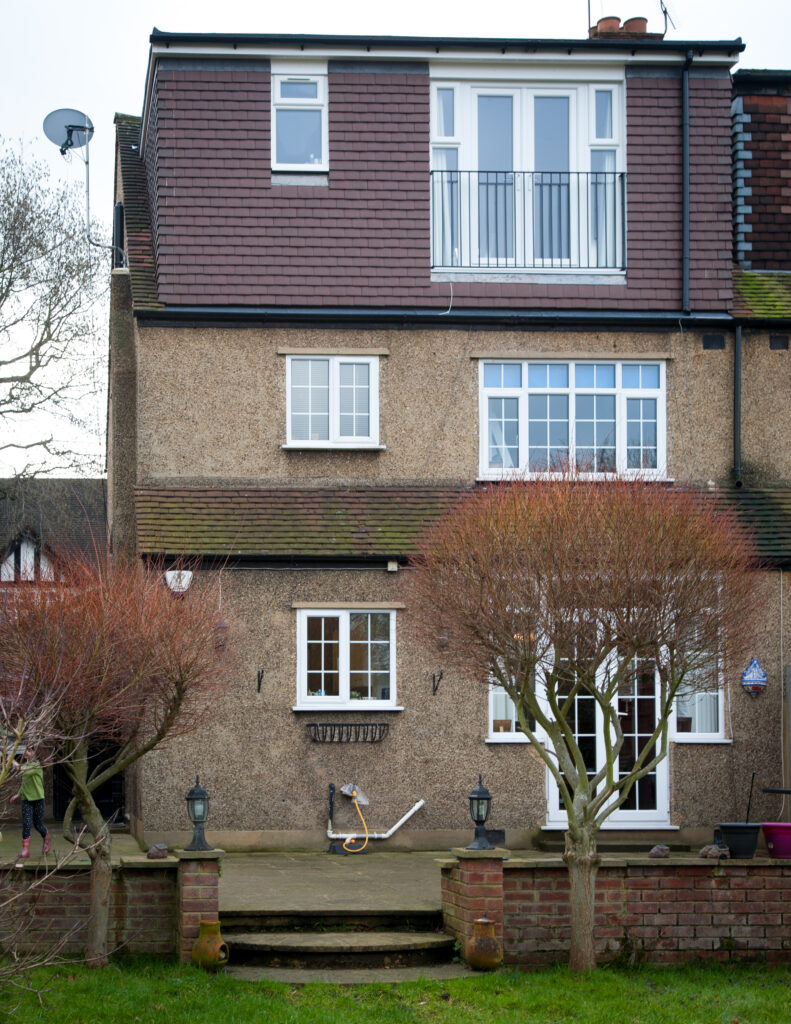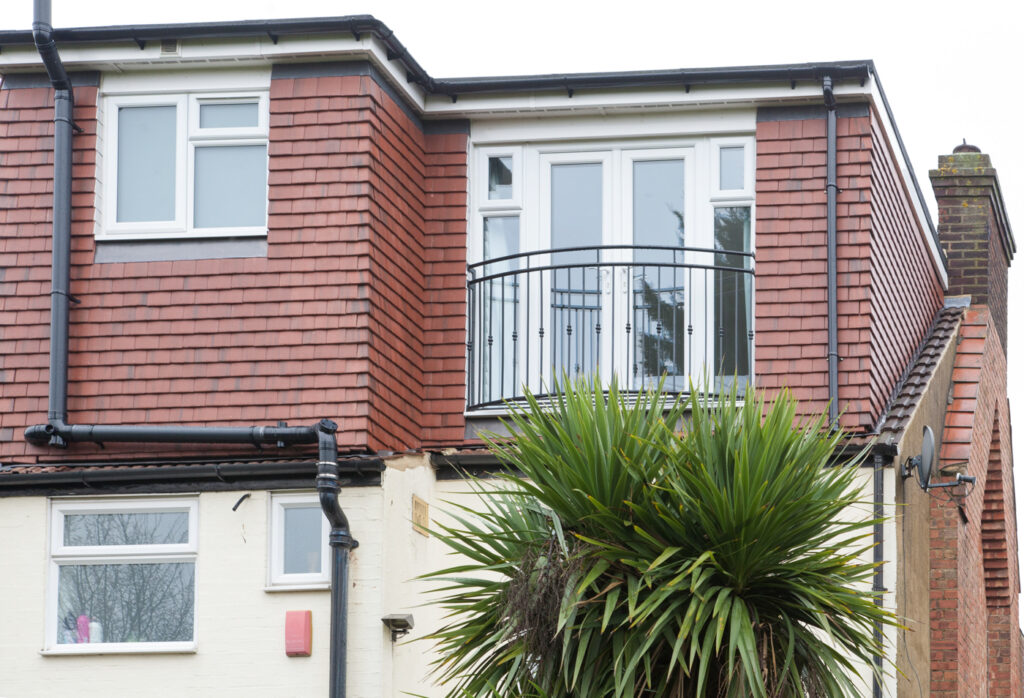Types of Loft Conversion
Flat Roof Dormer Loft Conversion
Loft conversions in any form can be a great addition to your existing home. If it is a flat roof dormer loft conversion, then the benefits are truly guaranteed. For all types of lofts, even if the headroom and floor space are limited, a dormer conversion can be extremely feasible. This alternative is also found beneficial for most types of housing constructions such as semi-detached, detached, bungalow, or terraced.
Maximise Your Loft Space: Discover the Benefits of a Flat Roof Dormer Conversion
A Flat Roof Dormer Conversion is one of the most popular and effective ways to transform your loft into a spacious, functional living area.
By extending the roof and creating a flat surface, this type of conversion maximises headroom and usable floor space, making even the smallest attics feel open and accommodating. Ideal for adding bedrooms, home offices, or extra bathrooms, flat roof dormers offer a modern and practical solution for expanding your home. Whether you’re looking to create a bright, versatile living space or simply add value to your property, a flat roof dormer conversion is an excellent investment.
All our conversion projects fully comply with the regulations set by the local building authority. From the initial design discussions through to construction and final completion, our skilled team provides comprehensive assistance with the Drawings, structural plans and schedule of works to ensure exceptional quality services. We offer a 10-year guarantee on all Structural and roofing works, and are fully insured up to £10 million. Additionally, we provide the necessary guidance to obtain planning permission if necessary.
Marken Lofts are here to help with any issues that you may have. Try our new WhatsApp option using 07828 225 872. You can also fill out our enquiry form to get an instant quote.

What is a Flat Roof Dormer Conversion?
A Flat Roof Dormer Conversion involves constructing a box-like extension on a sloping roof, with a flat roof and vertical walls. This design significantly increases the amount of space in your loft by removing the sloped ceilings typical of attic areas. The dormer is typically built at the rear of the property to maintain the home’s street-facing aesthetics while offering a spacious and functional interior.
Flat roof dormers are commonly used in terraced, semi-detached, and detached houses and can be adapted to suit a variety of architectural styles, making them a versatile choice for many homeowners.
Benefits of a Flat Roof Dormer Conversion
Flat Roof Dormer Conversions offer several advantages that make them a top choice for homeowners looking to enhance their attic space:
- Maximised Space: With vertical walls and a flat ceiling, you gain significant headroom and floor space, perfect for creating functional living areas.
- Versatile Design: The extra space can be used for a variety of purposes, including bedrooms, home offices, or en-suite bathrooms, providing flexibility in how you use your new loft.
- Increased Natural Light: Large dormer windows can be installed to bring in an abundance of natural light, making the space feel bright and inviting.
- Modern Aesthetics: Flat roof dormers add a contemporary touch to your home’s exterior and can be finished with materials that complement your property’s style.
- Added Property Value: Converting your loft with a flat roof dormer can increase your home’s value, making it a wise investment for the future.
Ideas for Your Flat Roof Dormer Loft Conversion
A Flat Roof Dormer Conversion opens up a world of possibilities for how you can use your new space. Here are some inspiring ideas:
- Master Bedroom with En-Suite: Create a luxurious master suite with plenty of space for a large bed, built-in wardrobes, and a stylish en-suite bathroom.
- Home Office or Study: With more people working from home, a spacious and well-lit office in your loft could provide the perfect environment for productivity.
- Children’s Playroom: Design a fun and safe play area for your kids, complete with storage for toys and books and lots of natural light.
- Guest Bedroom: Turn your loft into a comfortable guest retreat, complete with cozy furnishings and a beautiful view through large dormer windows.
- Additional Bathroom: If your home is short on bathrooms, a flat roof dormer conversion can be the perfect opportunity to add a sleek and modern bathroom.
“As someone who works in the construction industry, I was very picky about who undertook the work at my home, and I was impressed by the way Marken do business.”
Neil
Do I Need Planning Permission?
Planning permission for a Flat Roof Dormer Conversion depends on several factors, but many conversions can be completed under permitted development rights. This means you may not need formal planning permission if:
- The dormer does not extend beyond the plane of the existing roof slope on the principal elevation.
- The conversion does not exceed volume limits: 40 cubic meters for terraced houses and 50 cubic meters for detached or semi-detached houses.
- The dormer is not higher than the highest part of the existing roof.
- The materials used are similar in appearance to the existing property.
However, if your home is in a conservation area or is a listed building, you will likely need planning permission. It’s always advisable to check with your local planning authority before starting work.
Building Regulations
All Flat Roof Dormer Conversions must comply with building regulations to ensure safety and structural integrity. Key aspects of building regulations include:
- Structural Stability: The new dormer structure must be robust enough to support the roof and any additional load.
- Fire Safety: Adequate fire safety measures, such as fire doors and interconnected smoke alarms, must be in place to protect residents.
- Thermal Insulation: Proper insulation is necessary to make the space energy-efficient and comfortable throughout the year.
- Staircase Access: A safe and compliant staircase must be installed to provide access to the new loft space.
- Ventilation and Drainage: Adequate ventilation must be provided, especially if an en-suite bathroom is included, and proper drainage solutions must be in place.
Marken Lofts will ensure all building regulations are met and that the project is inspected at various stages by the local authority.
What does a Flat Roof Dormer Conversion Cost?
The cost of a Flat Roof Dormer Conversion varies based on the size, complexity, and finishes of the project. On average, a flat roof dormer conversion can range from £40,000 to £50,000. Factors that influence the cost include:
- The size of the dormer and number of windows
- The quality of materials used for construction and finishing
- The addition of features like an en-suite bathroom or bespoke storage
- The complexity of the project, including any structural reinforcements needed
While the initial investment can be substantial, the added living space and increased property value often provide a strong return on investment.
Conclusion
A Flat Roof Dormer Conversion is a fantastic way to transform your loft into a spacious, bright, and versatile living area. Whether you dream of a luxurious master suite, a productive home office, or a cozy guest bedroom, this type of conversion offers endless possibilities.
With the right planning and design, a flat roof dormer can enhance your home’s functionality, aesthetics, and overall value, making it a worthy investment for years to come.

Completed Projects
We created a large new living area consisting of bedroom and bathroom for Siobhan in Highams Park.
Why choose us to design and install your loft conversion?
With more than 28 years of practical experience, Marken Lofts specialise in delivering outstanding loft conversions. We take pride in our work and always strive to ensure our customers are truly happy and feel they have received exceptional value for their investment.
Our Commitment to Excellence
- Uncompromising Quality: Every project we undertake reflects our dedication to superior craftsmanship.
- Competitive Pricing: Offering exceptional value without compromising on excellence.
- Fully Insured: For your peace of mind, our team is fully insured up to £2 million.
- Immaculate Cleanliness: We maintain the highest standards of tidiness on every job.
- Transparent Pricing: Clear, upfront costs with no hidden surprises—know exactly what to expect.
- 10-Year Work Guarantee: Confidence and peace of mind with every project.
- End-to-End Project Management: From concept to completion, we handle every detail for a seamless loft conversion experience.
Our 10-Year Guarantee reflects the confidence we have in our skilled team to deliver outstanding results every time.
Areas we work in
We deliver exceptional loft conversions across North London, East London, and Central London. Get in touch if you would like to confirm we cover your area, or click on the map for more information.
For advice on a loft conversion or for a free survey call 0800 111 4883 or enquire online:
"*" indicates required fields
Types of Loft Conversions
Highly distinctive loft conversion services to enhance your space, whatever your needs.
FAQ
How long will the consultation and survey take?
Generally, we allocate approximately 1-2 hours for the consultation and survey process, but its often is no longer than 40 minutes. For larger or more intricate projects, it may take slightly longer to ensure we capture all necessary information accurately. Rest assured, our goal is to provide a comprehensive evaluation while respecting your time constraints. If time is precious and you just want a price for the works, If you fill in our instant quote form, this will eradicate the need for an initial survey.
Do I need planning permission for a loft conversion?
Whether you’ll need planning permission or if your project falls under permitted development largely depends on various factors such as the type of property you own, its location, and the specific regulations set by your local planning authority. Typically, many loft conversions in London fall under permitted development rights, meaning you can carry out the conversion without the need for planning permission as long as certain criteria are met. However, it’s crucial to consult with a professional architect or a loft conversion specialist to assess your individual circumstances. Factors such as the size and shape of your loft, the proposed alterations, and any previous extensions or conversions already carried out on your property can affect whether your project qualifies for permitted development or requires planning permission.
How much does a loft conversion cost?
Loft conversion costs vary depending on factors such as the size and complexity of the project, the materials used. On average, a basic loft conversion can cost between £20,000 to £55,000, but this can increase significantly for larger or more complex projects.
How long does it take to complete a loft conversion?
The duration of a loft conversion depends on factors such as the size of the loft, the complexity of the design, and any unforeseen issues that may arise during construction. On average, we complete a loft conversion 6 weeks or less.
Will a loft conversion add value to my property?
Yes, a well-executed loft conversion can significantly increase the value of your London property. It not only provides additional living space but also enhances the overall appeal and functionality of your home, making it more attractive to potential buyers. What’s more, the enhanced value often exceeds the initial investment made in the loft conversion.
What type of loft conversion is best suited for my home?
The most suitable type of loft conversion for your London home depends on factors such as the existing roof structure, available space, and your specific requirements. Common types of loft conversions include dormer, Velux, hip-to-gable, L-Shape and mansard conversions. Contact us and we shall help determine the best option for your property.
Are there any building regulations or safety standards I need to adhere to when converting my loft in London?
Converting your loft requires strict adherence to building regulations and safety standards to guarantee structural integrity and compliance with fire safety regulations. It’s important to note that adding another storey to your home may necessitate upgrades to existing doors to meet fire safety requirements. As regulations are subject to change, partnering with a trusted company that emphasizes safety and compliance is paramount to ensure your project meets all necessary standards.
Do I need to inform my neighbors or obtain their consent before proceeding with a loft conversion?
Before commencing your loft conversion project, it’s important to consider whether any of your external walls are shared with a neighbor. In such cases, you’ll likely need to establish a party wall agreement. This legal agreement outlines the rights and responsibilities of both parties regarding construction work that impacts a shared wall or boundary. While this process can sometimes be straightforward, involving the signing of a party wall agreement form, your neighbor may opt to consult with a qualified party wall surveyor, which may incur additional costs on your part. It’s advisable to discuss this matter with your neighbor and seek professional advice to ensure a smooth process.

